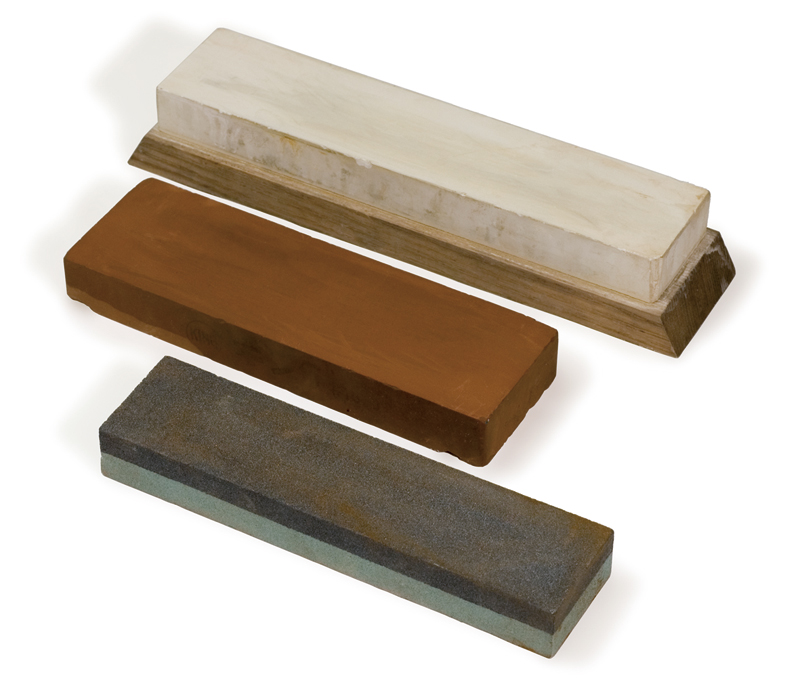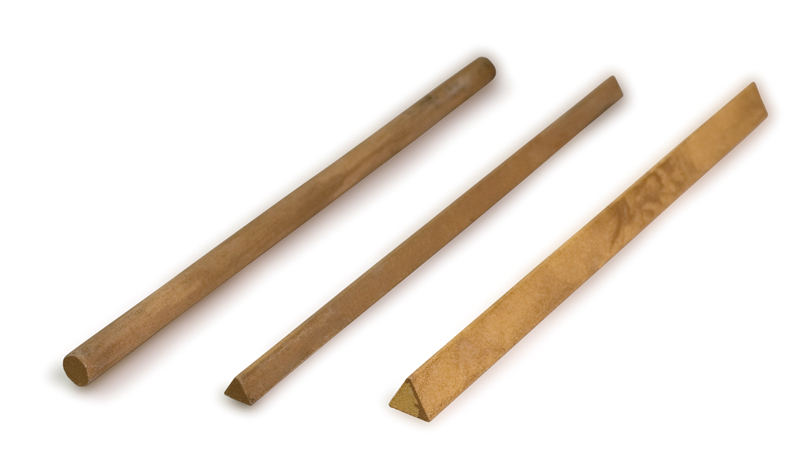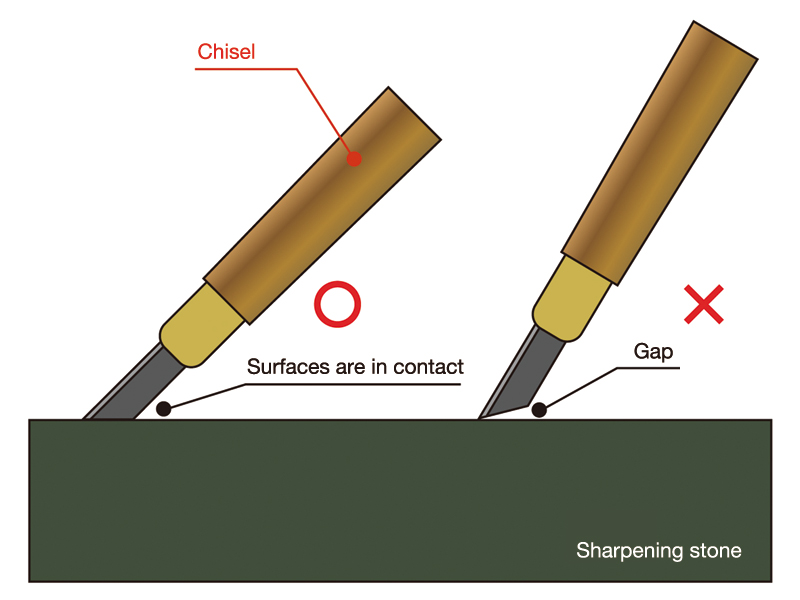Sharpening Stone
砥石
Toishi
CATEGORIES
A sharpening stone is used to sharpen various cutting instruments such as carving tools used in woodblock printing, burins used in wood engraving, and needles and scrapers used in copper plate printing.
When carving tools and burins are blunt or chipped, it becomes difficult to carve the printing block. So they need to be sharpened with a stone. There are two types of sharpening stone: those that use water (water stone) and those that use oil (oil stone) for lubrication. Both types are available in either natural or artificial materials.
A water stone is used to sharpen carving tools used in woodblock printing. There are three grades of water stone: rough stone, medium stone and finishing stone. The rough stone is used if there is a big chip on the blade. For ordinary use, however, only the medium stone and finishing stone are used, in that order. The rough stone and medium stone are highly water absorbent, so they need to be soaked in water in advance. They should be taken out of the water before use and placed on a special board or a piece of cloth so that they do not move. Flat knives and kiridashito (type of carving knife) are sharpened by pressing the inclined cutting edge of the blade flat against the stone. U-shaped gouges are sharpened by laying the inclined cutting edge on the stone and moving it left and right in semi-circles. Triangular knives are sharpened one edge at a time. When the knives are sharpened, burrs are produced on the reverse side of the blade. These must be removed by laying this reverse side flat on the stone and sharpening it gently. The reverse side of round and triangular knives can be sharpened with a sharpening rod or wet and dry sandpaper. Once the knives are sharpened with a medium stone, they should be sharpened again with a finishing stone in the same way.
An oil stone is used for sharpening burins used in wood engraving, and needles and scrapers used in copper plate printing. Typical examples of oil stones are the Arkansas oil stone (natural) and the India oil stone (artificial). Arkansas stone in particular is a high-quality natural stone known for its fine texture and good sharpening performance, and is very expensive. When using an oil stone, add a few drops of machine oil on top of the stone and align the inclination of the blade flat on stone, in the same way as described above for carving tools. When using wet and dry sandpaper instead of an oil stone, the paper should be used on a flat board. A grit size in the range of 1000 to 1500 is recommended.
Sharpening stones can be purchased at art supply stores handling printing supplies and at home centers.
 Water stone
Water stone- Water stone (close-up)

 Oil stone (Arkansas)
Oil stone (Arkansas) Sharpening rod
Sharpening rod- Sharpening a carving tool on a sharpening stone

